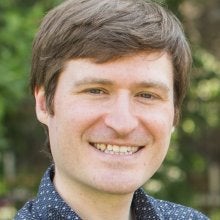

Scratch Encore Curriculum
Keep Educating
Scratch Encore Curriculum
Assistant Professor David Weintrop from the Center for Science and Technology in Education at the College of Education has partnered with the University of Chicago to develop Scratch Encore. Scratch Encore is aligned with CSforAll, a national movement to bring high-quality computer science education to all students, regardless of background. Scratch Encore provides an actionable and empirically-grounded answer to the question: Can we create advanced 4th-6th grade Computer Science (CS) instructional materials that give equal value to improving equity and student learning outcomes?
This curriculum fulfills a specific need in upper-elementary school and middle school education. While there are several polished introductory computer science (CS) curricula for 4th-6th grade classrooms, there are very few existing resources (for both teachers and students) to create a cohesive second CS learning experience, nor guidance on how to create them. This ad-hoc approach to intermediate Scratch instruction is a barrier to equitable computing education.
Ways to Use Scratch Encore
Scratch Encore is not designed to be completed in a single year. It has 14 modules, each containing 2-3 60-minute lessons. There are several ways a teacher might want to use this curriculum:
Intermediate curriculum: This is for students how have already had some programming experience through Code.org (beyond Hour of Code), Google’s CS First, or the Creative Computing Curriculum.
- Intermediate Steady Method: Complete Modules 1-N, going through all lessons. This allows students to first explore and learn the concept through modify activities in lesson 1, then solidify each concept and engage in more student-directed learning in the create lessons.
- Intermediate Virtual Pet Culminating Project: Complete Modules 1-6, completing all of the first exploratory lessons but only half the create lessons. This allows students to build their skills for their culminating project. They then design and build a virtual pet with inspiration from https://scratch.mit.edu/pet. We will develop materials to more directly connect the content to what they learned in Scratch Encore. The current Scratch materials focus on step-by-step instructions rather than design and implementation with known skills. Look for that in the future!
- Intermediate Storytelling Culminating Project: Complete Modules 1-7, completing all of the first exploratory lessons but only half the create lessons. This allows students to build their skills for their culminating project. They then design and build a story with inspiration from https://scratch.mit.edu/story. We will develop materials to more directly connect the content to what they learned in Scratch Encore. The current Scratch materials focus on step-by-step instructions rather than design and implementation with known skills. Look for that in the future!
- Advanced curriculum: This is for students who have already completed the intermediate curriculum and are coming around a second year to go deeper into the curriculum.
- Advanced Steady Method: Pick some review modules for your students by choosing a different theme than they had in their previous experience. For those review modules, start with only the modify. If they appear to struggle, then you can do the create, as well. Once the students are refreshed, continue through the new modules, completing all lessons.
- Advanced Game Culminating Project: Pick some review modules for your students by choosing a different theme than they had in their previous experience. For those review modules, start with only the modify. If they appear to struggle, then you can do the create, as well. Once the students are refreshed, continue through the game strand of the new modules, completing all modify and create lessons. At least four sessions prior to the end of instruction, invite students to design and then implement a game of their choice, utilizing the skills they built in the prior modules.
About the Center for Science and Technology in Education
The Center for Science and Technology in Education is in the Department of Teaching and Learning, Policy and Leadership in the University of Maryland College of Education. Our mission is to advance knowledge and understanding in science education and educational learning technologies for researchers and other constituencies and to develop educational leaders who will inform policy, improve practice, and address pressing social concerns with innovations in science education and educational technology.
We provide courses for the professional study of science education and learning technologies in both formal and non-formal settings and at levels from elementary through university. We offer degree programs in instructional practice toward Maryland State teacher certification in biology, chemistry, physics, and earth/space science. We also offer degree programs in science education and learning technologies research, toward a variety of careers in science and technology in education.
To follow our work, follow our Facebook Page.
Featured Faculty

Keep Educating main page